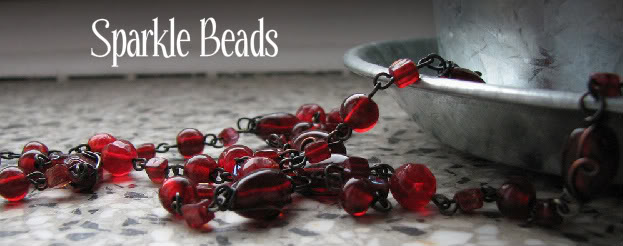History of Bon Odori Festival
:: The Lounge :: :: VIPz Forum :: Japanese Section :: Topics
Page 1 of 1
 History of Bon Odori Festival
History of Bon Odori Festival
Bon Odori (盆踊り) is an event held during Obon. It is celebrated as a reminder of the gratefulness one should feel toward one's ancestors.
Originally a Nenbutsu folk dance to express the effusive welcome for the spirits of the dead, the style of celebration varies in many aspects from region to region. Each region has a respective local Bon dance, as well as different music accompanying the dance. The music can be songs specifically pertinent to the spiritual message of Obon, or local min'yo folk songs. Consequently, the Bon dance will look and sound different from region to region. Hokkaidō, or northern Japan, is known for a folk-song known as "Soran Bushi." The song "Tokyo Ondo" takes its namesake from the capital of Japan. "Goshu Ondo" is a folk song from Shiga prefecture. Residents of the Kansai area will recognize the famous "Kawachi ondo." Tokushima in Shikoku is very famous for its "Awa Odori," or "fool's dance," and in the far south, one can hear the "Ohara Bushi" of Kagoshima.
The way in which the dance is performed is also different in each region, though the typical Bon dance involves people lining up in a circle around a high wooden scaffold made especially for the festival called a 'yagura'. The yagura is usually also the bandstand for the musicians and singers of the Obon music. Some dances proceed clockwise, and some dances proceed counter-clockwise around the yagura. Some dances reverse during the dance, though most do not. At times, people face the yagura and move towards and away from it. Still some dances, such as the Kagoshima Ohara dance, and the Tokushima Awa Odori, simply proceed in a straight line through the streets of the town.
The dance of a region can depict the area's history and specialization. For example, the movements of the dance of the Tankō Bushi (the "coal mining song") of old Miike Mine in Kyūshū show the movements of miners, i.e. digging, cart pushing, lantern hanging, etc. All dancers perform the same dance sequence in unison.
There are other ways in which a regional Bon dance can vary. Some dances involve the use of different kinds of fans, others involve the use of small towels called tenugui which may have colorful designs. Some require the use of small wooden clappers, or "kachi-kachi" during the dance. The "Hanagasa Odori" of Yamagata is performed with a straw hat that has been decorated with flowers.
The music that is played during the Bon dance is not limited to Obon music and min'yo; some modern enka hits and kids' tunes written to the beat of the "ondo" are also used to dance to during Obon season. The "Pokémon Ondo" was used as one of the ending theme songs for the anime series in Japan.
The Bon dance tradition is said to have started in the later years of the Muromachi period as a public entertainment. In the course of time, the original religious meaning has faded, and the dance has become associated with summer.
Here in Malaysia, Bon Odori Festivals are also celebrated every year in Penang and at the Matsushita Corp Stadium in Shah Alam, Selangor. This celebration, which is a major attraction for the state of Selangor, is the brain child of the Japanese Expatriate & Immigrant's Society in Malaysia. In comparison to the celebrations in Japan, the festival is celebrated on a much smaller scale in Penang and Selangor, and is less associated with Buddhism and more with Japanese culture. Held mainly to expose locals to a part of Japanese culture, the festival provides the experience of a variety of Japanese food & drinks, art and dance.

Yagura Stage

Bon Odori Festival Dancers 2007
Originally a Nenbutsu folk dance to express the effusive welcome for the spirits of the dead, the style of celebration varies in many aspects from region to region. Each region has a respective local Bon dance, as well as different music accompanying the dance. The music can be songs specifically pertinent to the spiritual message of Obon, or local min'yo folk songs. Consequently, the Bon dance will look and sound different from region to region. Hokkaidō, or northern Japan, is known for a folk-song known as "Soran Bushi." The song "Tokyo Ondo" takes its namesake from the capital of Japan. "Goshu Ondo" is a folk song from Shiga prefecture. Residents of the Kansai area will recognize the famous "Kawachi ondo." Tokushima in Shikoku is very famous for its "Awa Odori," or "fool's dance," and in the far south, one can hear the "Ohara Bushi" of Kagoshima.
The way in which the dance is performed is also different in each region, though the typical Bon dance involves people lining up in a circle around a high wooden scaffold made especially for the festival called a 'yagura'. The yagura is usually also the bandstand for the musicians and singers of the Obon music. Some dances proceed clockwise, and some dances proceed counter-clockwise around the yagura. Some dances reverse during the dance, though most do not. At times, people face the yagura and move towards and away from it. Still some dances, such as the Kagoshima Ohara dance, and the Tokushima Awa Odori, simply proceed in a straight line through the streets of the town.
The dance of a region can depict the area's history and specialization. For example, the movements of the dance of the Tankō Bushi (the "coal mining song") of old Miike Mine in Kyūshū show the movements of miners, i.e. digging, cart pushing, lantern hanging, etc. All dancers perform the same dance sequence in unison.
There are other ways in which a regional Bon dance can vary. Some dances involve the use of different kinds of fans, others involve the use of small towels called tenugui which may have colorful designs. Some require the use of small wooden clappers, or "kachi-kachi" during the dance. The "Hanagasa Odori" of Yamagata is performed with a straw hat that has been decorated with flowers.
The music that is played during the Bon dance is not limited to Obon music and min'yo; some modern enka hits and kids' tunes written to the beat of the "ondo" are also used to dance to during Obon season. The "Pokémon Ondo" was used as one of the ending theme songs for the anime series in Japan.
The Bon dance tradition is said to have started in the later years of the Muromachi period as a public entertainment. In the course of time, the original religious meaning has faded, and the dance has become associated with summer.
Here in Malaysia, Bon Odori Festivals are also celebrated every year in Penang and at the Matsushita Corp Stadium in Shah Alam, Selangor. This celebration, which is a major attraction for the state of Selangor, is the brain child of the Japanese Expatriate & Immigrant's Society in Malaysia. In comparison to the celebrations in Japan, the festival is celebrated on a much smaller scale in Penang and Selangor, and is less associated with Buddhism and more with Japanese culture. Held mainly to expose locals to a part of Japanese culture, the festival provides the experience of a variety of Japanese food & drinks, art and dance.

Yagura Stage

Bon Odori Festival Dancers 2007
:: The Lounge :: :: VIPz Forum :: Japanese Section :: Topics
Page 1 of 1
Permissions in this forum:
You cannot reply to topics in this forum













